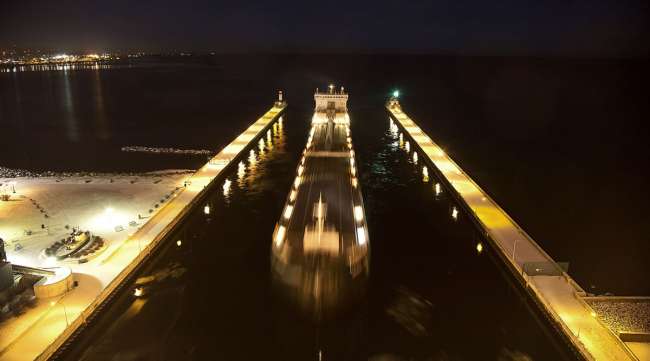As Great Lakes Shipping Starts, Extra Precautions for COVID-19 Are Taken

[Stay on top of transportation news: Get TTNews in your inbox.]
DULUTH, Minn. — The season’s first load of iron ore left the Duluth harbor before dawn March 22, carrying with it some extra cargo — caution over the spread of coronavirus.
The shipping industry is taking steps to keep crews and communities safe as the flow of maritime traffic ramps up ahead of the Soo Locks opening March 25, allowing ships to move in and out of Lake Superior.
“Shipping is vital to supplying North America,” said Duluth Seaway Port Authority spokesman Jayson Hron. “Companies and agencies are doing everything they can to meet the challenge.”
The movement of crews will be restricted at times, and seaway inspectors will take extra precautions before boarding ships. Crews will be monitored for symptoms, and suspected cases will be reported to the proper authorities.
“With the COVID-19 outbreak, we are living in exceptional times,” Terrence Bowles, CEO of the St. Lawrence Seaway Management Corp., said in a statement. “We witnessed a tremendous response by our employees and members of the broader marine community in overcoming a range of obstacles to ensure that the Seaway can open.”
The Coast Guard has set up its own response to the virus to keep its civilian and military workforce healthy.
“We are America’s maritime first responder,” Commandant Adm. Karl Schultz said in a video update last week. “The nation is counting on us to keep commerce flowing.”
Two Coast Guard cutters have been clearing ice on the east edge of Lake Superior and the upper St. Marys River that flows into the lower lakes.
Waiting in line for the Soo’s official opening at 12:01 a.m. March 25 is the Burns Harbor, bringing Iron Range taconite from Duluth to Indiana.
Last year’s ore shipments beat recent averages, though while mines remain open amid the coronavirus threat, a national recession could prompt a downturn.
“It would be premature to speculate total tonnages,” said Hron, the Duluth port spokesman. “The industry is doing its best to meet the challenge and keep moving.”
Already there has been lost time on the water. The start to international shipping was delayed this year due to high water — lakes Superior, Michigan, Huron and Erie all set monthly high-water records in February, according to the U.S. Army Corps of Engineers.
The locks that connect the St. Lawrence River to Lake Ontario and beyond are scheduled to open April 1, almost two weeks later than hoped. The Welland Canal between Lakes Ontario and Erie opened March 24.
The Chamber of Marine Commerce, an Ottawa-based shipping advocacy group, said it is waiting to see “how COVID-19 will impact Great Lakes-St. Lawrence and coastal shipping from an economic perspective.”
Want more news? Listen to today's daily briefing:
Distributed by Tribune Content Agency, LLC




